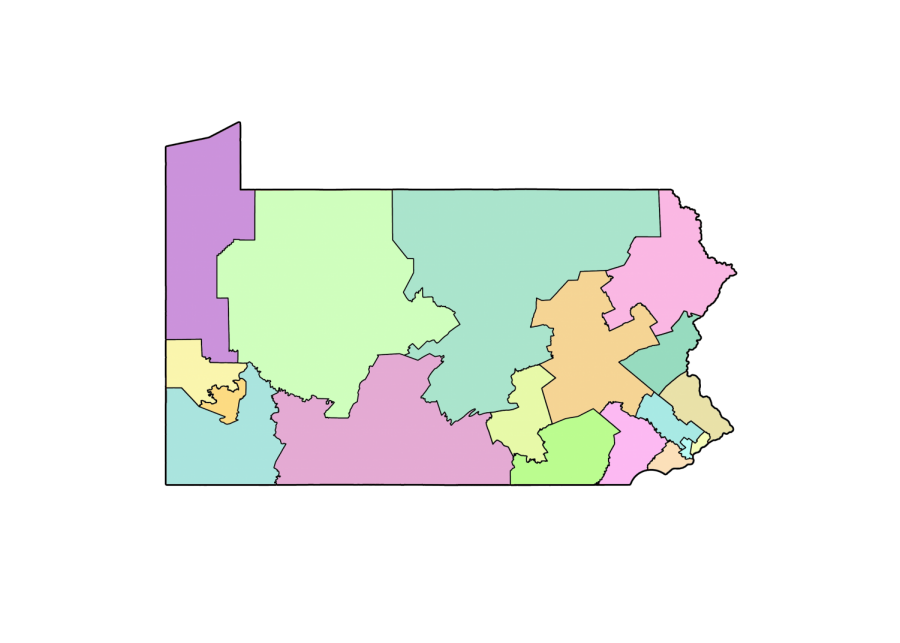PA plots new congressional district lines to overturn Republican gerrymander
February 23, 2018
The Pennsylvania Supreme court redrew boundaries for the state’s congressional districts on Feb 19. This created a new map that could play an integral role in the Democratic Party’s efforts to gain control of the House of Representatives in the midterm elections in November.
Christopher Ellis, associate professor of political science, expressed his perspective on the new boundaries for Pennsylvania’s congressional districts.
“The elections that really mattered in Pennsylvania were in 2015. Pennsylvania elects its judges to its state Supreme Court, and does so on a partisan basis. That year, it narrowly elected three Democrats to the court, making the court majority-Democratic. If Republicans had won one of those three elections, I can’t imagine we would have anywhere near the maps that were just released,” Ellis said.
The Supreme Court ruled in January that the state’s existing congressional map was an illegal partisan gerrymander that violated the state constitution. Partisan gerrymandering refers to the drawing of political boundaries in order to give a political party a numeric advantage over its opposition. In the United States, every state elects a certain number of people to the House of Representatives, which is reflective of the census count of the state’s population. Thus, Pennsylvania has to be divided into 18 congressional districts with roughly equal populations. The majority party in the state legislature in most U.S. states dictates this entire process.
The ultimate goal of partisan gerrymandering is to create many districts that elect members of one party and very few from its opposing party. Since 2010, the Republican party has held the upper hand in this gerrymandering process through the implementation of a jagged, uneven distribution of political representation.
Republicans won 13 of 18 seats in three straight elections under the now invalidated map, even though Pennsylvania’s statewide elections are often divided equally across parties and registered Democrats comprise a larger part of the population than Republicans. Election analysts predict that the court’s new map could result in Democrats picking up three or four more seats, based on 2016 patterns of voting.
However, “these new maps are far more favorable to Democrats than the old ones, and it appears that the court went out of its way to make them that way,” Ellis said. “So, from that perspective the take is: Students need to know that state and local elections matter. Students and young people turn up to vote at fairly high rates in presidential elections, but tend to ignore the other ones. It’s those local elections, though, that very often have a bigger impact on your life.”
Ellis has made it evident that students have the role of keeping themselves informed in state and local elections as we are responsible for being aware of the political environment in which we live and its changing dynamics.
Noah Prince ’19, a double-major in political science and history, had an interesting approach to this political event.
“I think the public will learn a lot more about the new congressional districts after the midterm elections. It will be interesting to see how the Democratic and Republican parties adjust and if the Republicans can subvert the Supreme Court’s decision,” Prince said.






















